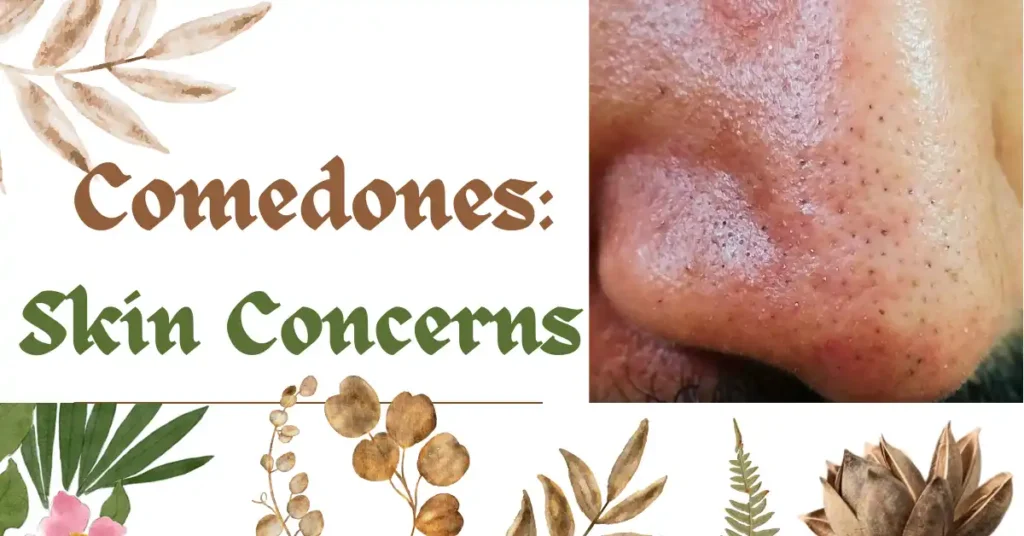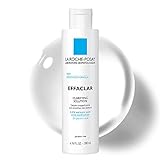Introduction
Are you tired of waking up to find small, annoying bumps on your face, often in the most inconvenient places? If so, you might be dealing with comedones. Comedones are the hidden culprits behind those unsightly skin blemishes that can ruin your day. In this article, we’ll embark on an exploration of these minuscule menaces that affect so many of us. What exactly are comedones? How do they form? And, most importantly, how can you deal with them? We’re here to shed light on these questions and guide you through the world of skincare.
What Are Comedones?
Comedones are skin blemishes that can appear anywhere on the body but are most commonly found on the face, chest, and back. These pesky little imperfections often look like small, raised bumps on the skin’s surface. But what are they really, and what causes them? Let’s dive deeper into the world of comedones.

Understanding the Basics
Comedones are a type of acne lesion. They come in two primary forms:
- Whiteheads (Closed Comedones): These are characterized by small, white or flesh-colored bumps with a tiny opening at the surface. The pore is partially blocked, trapping sebum (natural skin oil) and dead skin cells inside.
- Blackheads (Open Comedones): Blackheads, on the other hand, have a wider opening at the skin’s surface, which exposes the trapped sebum and dead skin cells to air. This contact with air oxidizes the trapped material, turning it black or dark brown.
Factors Contributing to Comedone Formation

1. Excessive Sebum Production
One of the primary culprits behind comedones is excessive sebum production. The sebaceous glands, located beneath the skin’s surface, produce sebuman oily substance meant to lubricate and protect the skin. However, when these glands go into overdrive, producing an excess of sebum, it can mix with dead skin cells and block the hair follicles, leading to the formation of comedones.
2. Hormonal Changes
Ah, hormones—the unseen conductors of our bodily orchestra! Fluctuations in hormone levels, particularly during puberty, menstruation, pregnancy, or when using certain medications, can trigger an imbalance in sebum production. This imbalance, in turn, contributes to the development of comedones.
3. Dead Skin Cell Build-Up
Our skin is a master at regeneration, constantly shedding dead skin cells. Yet, sometimes, this natural process can go awry. When dead skin cells fail to shed properly, they accumulate and mix with sebum, plugging up the hair follicles and forming comedones.
4. Cosmetics and Skincare Products
Believe it or not, your beloved skincare routine might be a double-edged sword! Some cosmetics and skincare products, especially those heavy in oils or comedogenic ingredients, can exacerbate comedone formation. They may clog pores and contribute to the accumulation of debris, leading to the dreaded blackheads and whiteheads.
5. Diet and Lifestyle Factors
While it might not be the sole culprit, diet and lifestyle can play a role in the development of comedones. High-glycemic foods, dairy products, and a diet rich in sugars might potentially influence sebum production and skin inflammation, thus contributing to the formation of these blemishes.
The key disparities between acne and comedones in a comprehensive table:
| Aspect | Acne | Comedones |
|---|---|---|
| Nature of Lesions | Inflammatory and non-inflammatory lesions. | Non-inflammatory lesions (preliminary form of acne). |
| Appearance | Pustules, papules, cysts, or nodules. | Blackheads (open) and whiteheads (closed). |
| Severity | Mild to severe, potential for scarring. | Mild, often the initial stage of acne development. |
| Occurrence | Across face, neck, shoulders, and back. | Primarily on the face, potentially on other body parts. |
How to Distinguish Between the Two?
Distinguishing between acne and comedones relies on identifying the presence of inflammatory lesions. Acne encompasses a spectrum of lesions, including inflammatory (such as papules and cysts) and non-inflammatory (like blackheads and whiteheads). Comedones, on the other hand, solely comprise non-inflammatory lesions.
Treating and Preventing Product
Benzoyl peroxide kills acne-causing bacteria and helps unclog pores. It’s available in many over-the-counter products, such as:
- Neutrogena On-the-Spot Acne Treatment
- Clean & Clear Persa-Gel 10
Salicylic acid is a beta hydroxy acid (BHA) that helps exfoliate the skin and unclog pores. It’s found in products like:
- Paula’s Choice 2% BHA Liquid Exfoliant
- La Roche-Posay Effaclar Clarifying Solution
Adapalene is a retinoid that helps prevent comedones from forming and reduces inflammation. It’s available over-the-counter as Differin Gel.
Azelaic acid has antibacterial and anti-inflammatory properties, and it can help reduce hyperpigmentation (dark spots) . It’s found in products like:
- The Ordinary Azelaic Acid Suspension 10%
- Paula’s Choice Azelaic Acid Booster
Remember: It may take several weeks of consistent use to see results. If you’re not sure which product is right for you, it’s best to consult a dermatologist.
home remedies for Comedones
1. The Efficacy of Honey:
Honey, revered for its natural essence, yields formidable benefits in the battle against comedones. Its innate antibacterial and anti-inflammatory properties confront the acne-causing bacteria nestled within pores. Additionally, its humectant nature preserves skin hydration, preventing further pore congestion.
Procedure for Honey Mask: Combine a portion of raw honey with equal parts plain yogurt. Apply this amalgamation onto a freshly cleansed face, allowing it to rest for 15-20 minutes before rinsing with lukewarm water. Witness the transformation to smoother, clearer skin with a touch of sweetness.
Reminder: Conduct a patch test on a small skin area before the facial application of honey, particularly if you have sensitive skin.
2. Clay’s Purifying Influence:
Derived from the depths of the earth, clay stands as nature’s magnet for impurities. Variants like bentonite and kaolin possess the ability to absorb surplus oil and eliminate dead skin cells, effectively unclogging pores and refining skin texture. Their gentle exfoliating properties act as a deterrent to future comedone formation.
Procedure for Clay Mask: Blend a tablespoon of clay powder in a non-metallic bowl with water or apple cider vinegar until a smooth paste forms. Apply this mask to a clean face, allowing it to completely dry before rinsing off with lukewarm water. Experience the satisfying elimination of toxins from your pores.
Tip: Exercise caution with sensitive skin to prevent complete drying of the mask.
3. Oats: A Calming Remedy:
Oats, often underestimated, offer a gentle yet potent solution for comedonal concerns. Colloidal oatmeal, finely ground into flour, boasts anti-inflammatory and antioxidant characteristics, soothing irritated skin and minimizing redness. Additionally, its exfoliating action aids in diminishing dead skin cells, creating an inhospitable environment for comedone formation.
Procedure for Oatmeal Scrub : Soften a handful of rolled oats in warm water, creating a paste to gently massage onto dampened facial skin. Rinse thoroughly with lukewarm water and revel in the post-oatmeal radiance.
Bonus Tip: Infuse your oatmeal scrub with honey or yogurt for an added dose of skin-nourishing properties.
4. The Potency of Steam:
Embrace steaming as a rejuvenating session for your facial pores. The warm mist facilitates pore expansion, easing the removal of trapped impurities. Furthermore, it enhances blood circulation, delivering fresh oxygen and nutrients to skin cells.
Procedure for Steam : Boil water, incorporating a few drops of preferred essential oil (such as tea tree or rosemary). Envelop your head with a towel and lean in towards the steam for 5-10 minutes, allowing your pores to exhale impurities. Subsequently, cleanse gently and apply your favoured moisturiser.
Caution: Exercise restraint when steaming, particularly for sensitive skin, to prevent potential irritation.
Conclusion
In the quest for clear, radiant skin, understanding what comedones are and how to deal with them is essential. These tiny blemishes can be frustrating, but armed with the knowledge we’ve shared in this article, you’re better equipped to tackle them. Remember, a consistent skincare routine, non-comedogenic products, and professional guidance when necessary can make a significant difference in your battle against comedones. So, take care of your skin, and those pesky bumps will become a thing of the past. Here’s to a brighter, blemish-free future!
Affiliate disclosure
Kindly take notice that this post may includes hyperlinks that qualify as affiliate links. As a result, I may become eligible to receive a modest commission, without any expense to you, in the event of a purchase made through these hyperlinks featured on this website. Cosmeticknowledge.com is a participant in the Amazon Services LLC Associates Program.
https://www.youtube.com/channel/UCwivHo24VuhS0Lj54pzGScA
https://www.facebook.com/profile.php?id=100093483188011
FAQs about Comedones
Here are some frequently asked questions about comedones and their treatment:
Are comedones the same as pimples or acne?
Comedones are a type of acne lesion, but they differ from pimples. Pimples are inflamed and can be painful, while comedones are non-inflammatory blemishes.
Can comedones go away on their own?
Some comedones may resolve on their own, but many persist. Establishing a good skincare routine can help prevent and treat them.
What’s the best way to prevent comedones?
Preventing comedones involves maintaining a proper skincare routine, using non-comedogenic products, and avoiding habits that can contribute to their formation.
Can I use makeup to cover up comedones?
Yes, you can use makeup to conceal comedones, but it’s essential to choose non-comedogenic makeup products and ensure you remove makeup thoroughly at the end of the day to prevent further clogging of your pores.








